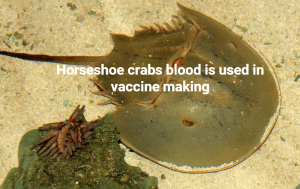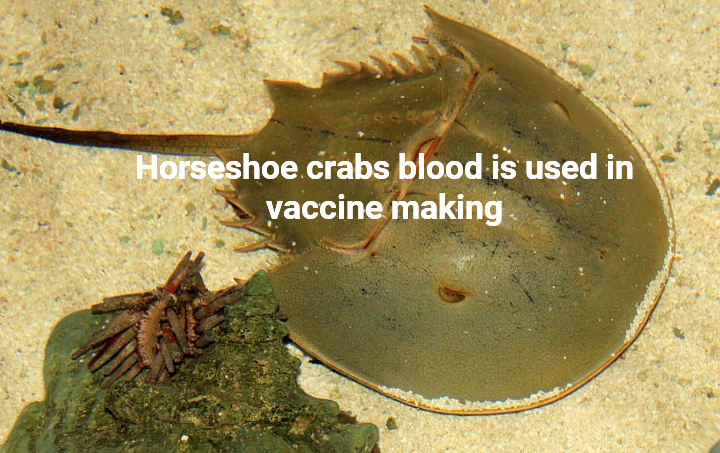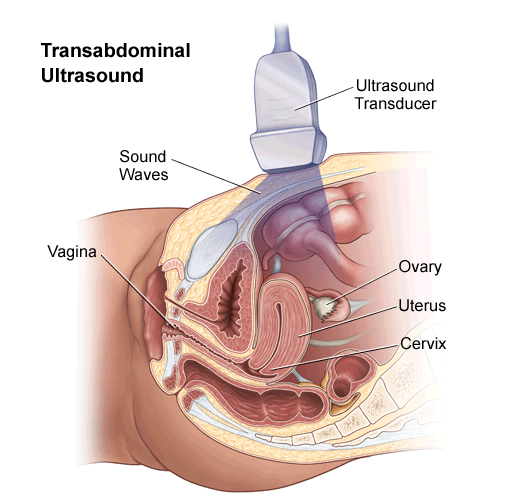Are Horseshoe crabs dangerous?
Without this animal, you wouldn’t have been able to receive COVID-19 vaccine.
Alright, the 5 seconds video is not enough to look at it well. So let me talk about it so you can know more about it.
You can see the person in the video holding the horseshoe crab with the bare hands. That puts paid to the question whether it is dangerous. They are not.
See video:
The animal is known as horseshoe crab. It is not actually a crab. It is more related to sea scorpion, sea spider or other marine arachnids.
They’re not dangerous to humans at all. Even though they have a dozen legs (6 pairs) with claws, their their claws have a weak grip. The first pair of legs are used to move foods closer to the mouth while the remaining five are used for walking. And their tails, telsons, even though it looks like that of stingrays, it’s not venomous or dangerous at all. They actually use it to flip themselves when overturned.
They have blue blood like octopus. What makes our blood red is the presence of hemoglobin, which is rich in iron. Horseshoe crabs on the other hand have hemocyanin, which is rich in copper. This is what give their blood the blue colour.
Let’s move to the role they played in COVID-19 vaccines. We humans have white blood cells to help us fight infection. Horseshoe crabs have amebocytes. No, not amebo that carry gist. Amebocyte! Amebocyte are cells that attack pathogens and trap them in something like a goo (potopoto). This keeps the disease causing pathogens from spreading around in their own body. In 1956, Fred Bang, a physician at Johns Hopkins, discovered that amebocytes can be used to test the safety of vaccines or drugs. If amebocytes are added to the contents of the vaccine, implants or drug, and they excrete their gooey defense mechanism, it means the product isn’t ready for use yet, because the specimen contains bacteria encountered by the amebocytes.

Scientists draw blood (about 10-30%) from horseshoe crabs and return them back to the ocean. From the amebocytes of these animals, they extract what is known as LAL (limulus amebocyte lysate) which is what is now used to test for safety of these vaccines and medical consumables. Without it, the COVID-19 vaccine wouldn’t have been ready on time because of the concern of safety from endotoxins.
Alternatives to LAL are currently being tested as horseshoe crabs are dwindling in population. This is because people (e.g in Thailand and Malaysia) eat female horseshoe crabs as delicacies. Some fishermen in the US also use them as bait to catch eels and conches.
They are found in North America and Asia.
A litre of horseshoe blood is quite expensive and can earn you a fortune. Watch it, it is only trained scientists that can extract blood from them in a sterile manner that will not harm them. So don’t go about hunting them for money.
Horse shoe crabs are known as living fossil. They have 10 eyes.
There are many other fascinating things about this fascinating animal but let’s stop here for now.
Thank you ☺️
Contribution by Arojinle
























